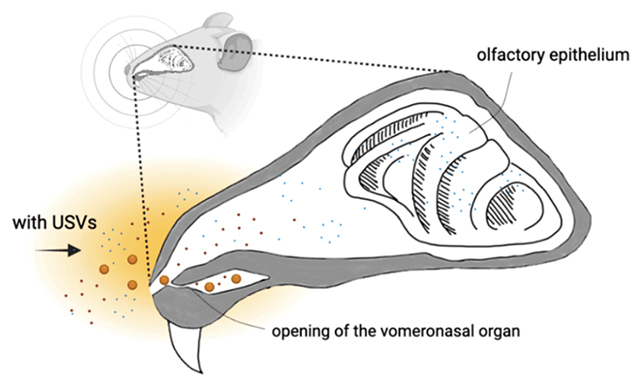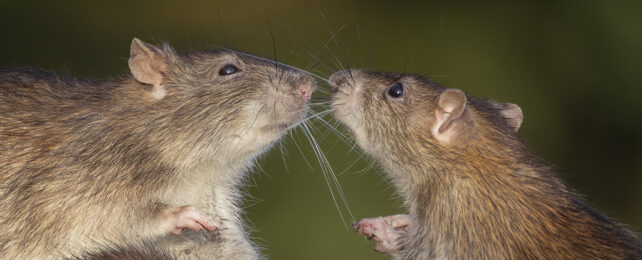Scientists have long known about the ultrasonic vocalizations (USVs) mice and rats make. Beyond the range of human hearing, the exact purpose of these high-pitched sounds isn't certain.
A new proposal suggests USVs are used to shift particles in the air to enhance the sense of smell in these animals.
Put forward by psychologist Eduardo Mercado III from the University at Buffalo and Harvard University neuroscience student Jessica Zhuo, the hypothesis has yet to be verified in experiments, but fits with behavior observed in rats, which typically sniff the air immediately after emitting an USV.
To support their idea, the two researchers compiled evidence on rodent behavior, the effects of ultrasound vibrations, and biological mechanisms that generally apply to multiple species.
Ultrasound vibrations can manipulate matter in a variety of different ways, the researchers note, so it's possible that rodents are creating clusters of molecules around them, making them easier to detect with their noses.

In particular, the behavior could serve to concentrate pheromones; chemicals that communicate social interactions, mating, or territory. As suggested by earlier research, a burst of ultrasound could clump these biological aerosols together.
Known as agglomeration, the clumping process could potentially deposit higher concentrations of pheromone in the vomeronasal organ (VNO) of the animals, the researchers suggest.
"This phenomenon has never been observed before, or I believe even suspected, in any animal," says Mercado.
"They're creating new pathways of information by manipulating their environment and controlling the molecular interactions of particles around them."
It's been suggested previously that USVs are mating calls or signifiers of emotional states. This new proposal doesn't rule out those options, rather it suggests ultrasound could also be used as a matter-moving, smell-enhancing tool. Lab tests on rats and mice could help in exploring the possibility further.
"It's so far off the scale of what we know that it's like we're observing Jedi rats," says Mercado. "It almost seems like magic."
If rats and mice really are using USVs to smell better, it could give us a better understanding of their actions during lab tests and real-world observations – and a better understanding of the many studies involving these animals.
This might also lead to fundamental discoveries about how animal senses have evolved to work in tandem, and how breaks in that signaling could affect physical and mental health – in humans as well as rodents.
"The fact that we were oblivious to anything like this being possible means we don't have the understanding yet for how nanoparticles might be sonically manipulated for complex uses," says Mercado.
"But we might have a pretty big head start if we confirm that nature has already solved the problem for us."
The research has been published in Neuroscience & Biobehavioral Reviews.
